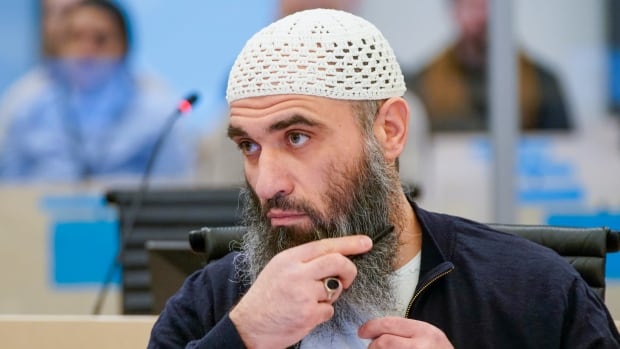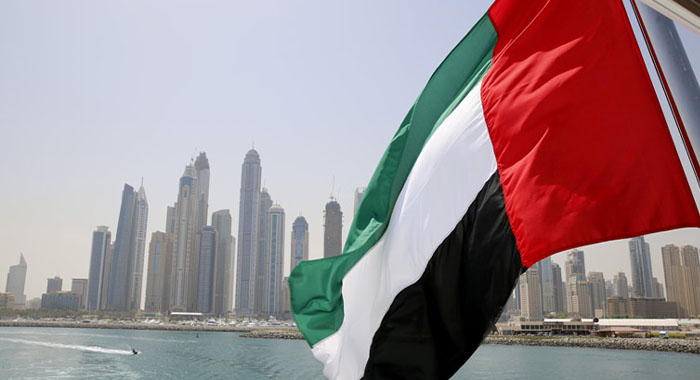Wartime need has pushed Ukraine’s government to permit calling up more of its adult population to join the fight against the Russian invasion — a long-considered, but still-contentious step that could provide Kyiv’s armed forces with thousands of new recruits.
Ukrainian President Volodymyr Zelenskyy formally approved legislation this week that lowers the age of mobilization for combat duty to age 25, down from its previous limit of 27.
He also signed a bill that will eliminate some draft exemptions and another that will create an online registry of possible recruits.
Zelenskyy’s government is trying to fulfil its immediate wartime requirements while taking care of its demographic future, with these factors weighing heavily in determining how many more of its citizens must be directly pulled into its war effort.
Oksana Zabolotna, an analyst with the Centre of United Actions, a government watchdog group in Kyiv, believes the combined changes could help the army add another 50,000 troops.
Zelenskyy has declined to say how many more soldiers Ukraine needs to repel the Russian invasion, but the president has stated that he believes Russia is preparing to send 300,000 more people into the fight later this spring.
Challenges of conscription
The issue of who to send to go to war is thorny, with a wartime government having to set the parameters for who has to leave civilian life behind for military service.
Tymofiy Mylovanov, an associate professor in the department of economics at the University of Pittsburgh, said that no matter what Kyiv does, there will be people left upset by the choice that is made by the government when it comes to conscription.
“Any policy that you will have is somehow discriminatory,” said Mylovanov, who noted that the more transparent the government is with its policy, the more immediate the upset from those affected.
Secrecy, on the other hand, is not looked upon favourably in a democracy, like Ukraine.
Keir Giles, a senior consulting fellow at the U.K.-based Chatham House think-tank, said these are issues that Kyiv has to manage, as it asks more people to put their lives on the line.
“It has to be sensitive to how its citizens feel about the war and that’s the reason why there’s been this hesitation to declare mobilization,” he told CBC’s About That.
But Mylovanov said Kyiv is also keeping an eye to the future, by trying to keep its younger generation out of the fray of war.
“Ukraine is trying to protect its young because we’re fighting for survival as a nation,” said Mylovanov, who previously served as Ukraine’s minister for economic development, trade and agriculture from mid-2019 into early 2020.
Not all will be called
Yuriy Gorodnichenko, a professor of economics at the University of California, Berkeley, points out that the lowering of the mobilization age “doesn’t mean that everyone in this age group is going to end up serving in the army,” as a result of various allowable exemptions to military service.
Such exemptions are part of the reason why Zabolotna expects the army to raise only 50,000 recruits out of roughly 500,000 Ukrainian men in this age range.

“Some of them are unfit for service, some have left, some are [in the] reserve or have the right to deferment,” Zabolotna told The Associated Press.
Gorodnichenko said it’s nonetheless hard to judge the impact of Ukraine sending more of its younger adult population to war.
“Nobody really knows because the hard economic data is so difficult to get now,” he said in a telephone interview.
He said people in this age range — 25- and 26-year-olds — would be more likely to have young children at home than some of their older peers.
In a country that has seen fewer babies being born over the course of several decades, Ukrainian parents — or parents-to-be — play an important role in Ukraine’s future.
“We have demographic issues,” said Mylovanov. “Our population is declining without the war.”
But the war is taking its toll there, as well: Ukrainian authorities say the country saw 32 per cent fewer births in 2023 than they did in the year before Russia launched its invasion.
A war of attrition
Orysia Lutsevych, the head of the Ukraine Forum at Chatham House, believes Kyiv’s decision to lower the mobilization age reflects the reality that Ukraine faces a war of attrition.
Advances have grown more costly to secure over the course of the war, with hovering drones, firing artillery and fortified defences all factoring into the lethal conditions along the front lines. But Russia has nonetheless been inching forward in eastern Ukraine in recent weeks, following its capture of the city of Avdiivka in February.

The average age of soldiers fighting for both Russia and Ukraine is over 40, according to military analysts — though Mylovanov said that may be a somewhat misleading statistic. He said the army has people employed in many roles and the people taking part in particular actions on the front lines skew much younger.
In terms of the total number of troops that either side can muster, Russia has a population that is more than triple that of Ukraine’s and Russian President Vladimir Putin has shown a willingness to force men to the front.
The issue of drafting soldiers is more politically fraught in Ukraine, with Zelenskyy’s government trying to reconcile battlefield pressures with domestic pushback on forcing more people into the fight.
Chatham House’s Giles said the fact that “mobilization is so politically sensitive in Ukraine is just one of the indicators of how these are two very, very different countries at war with each other.”
He said there’s no such conversation in Russia, which has conversely “found it extremely easy” to find people to send into battle — including prison inmates.
Russia has also shown a willingness to tolerate hefty losses of soldiers, tanks and ships, as it pursues its still-failed invasion effort.
The war has also cost thousands of Ukrainian civilians their lives, separate from the tens of thousands of Ukrainian soldiers who have died fighting the invasion so far.





